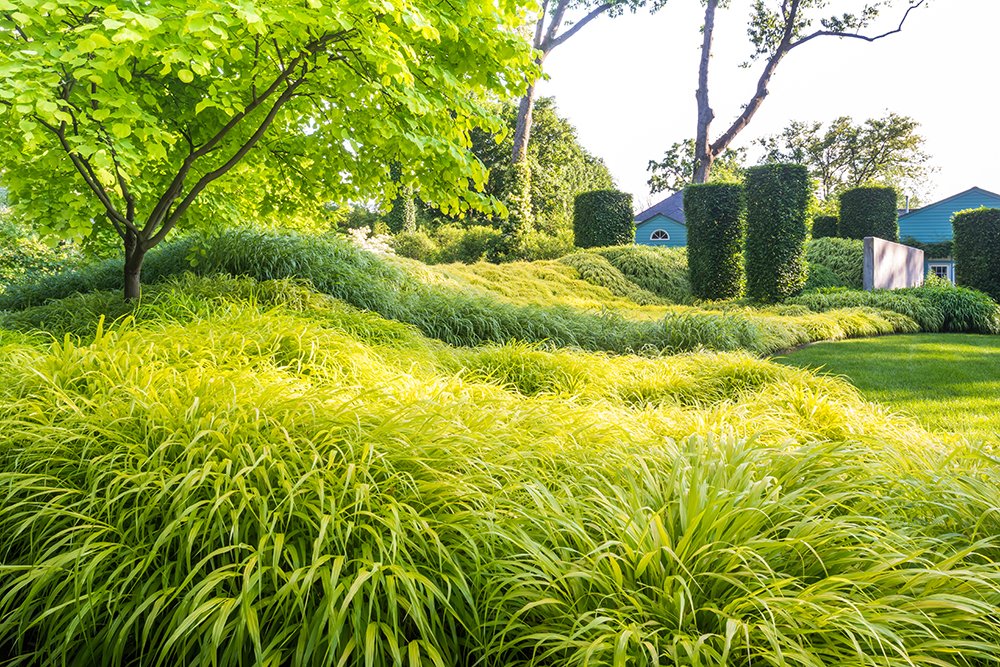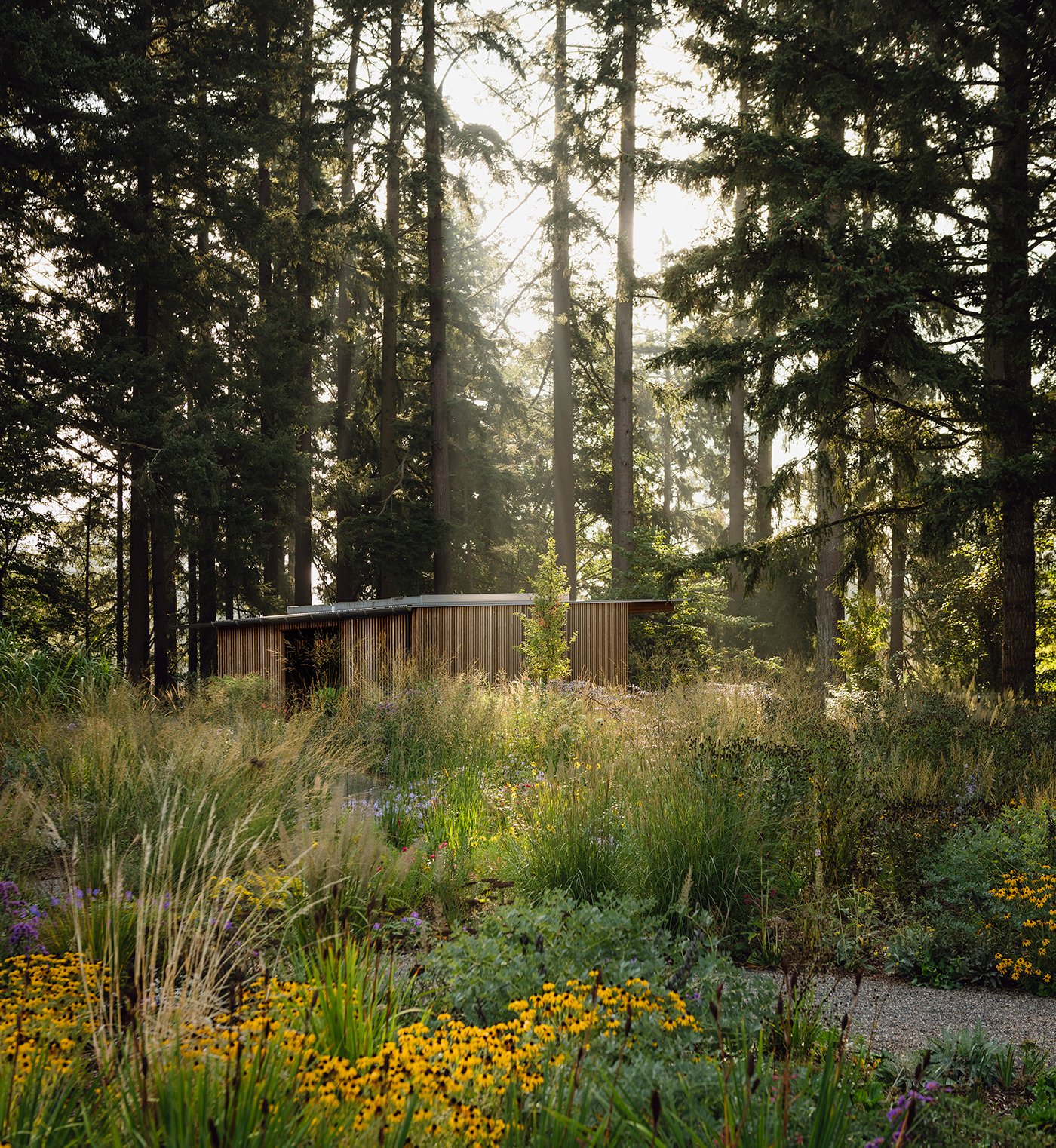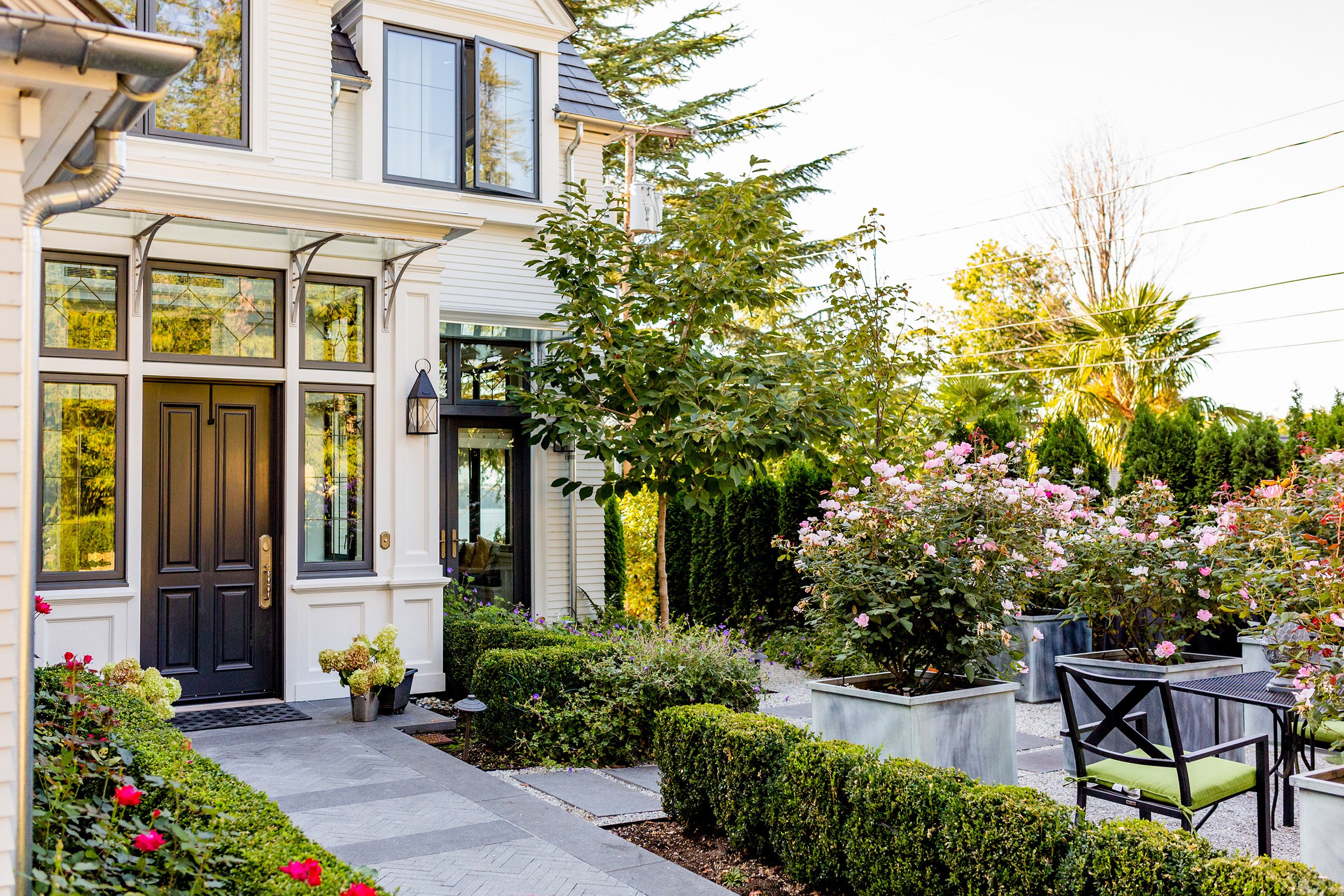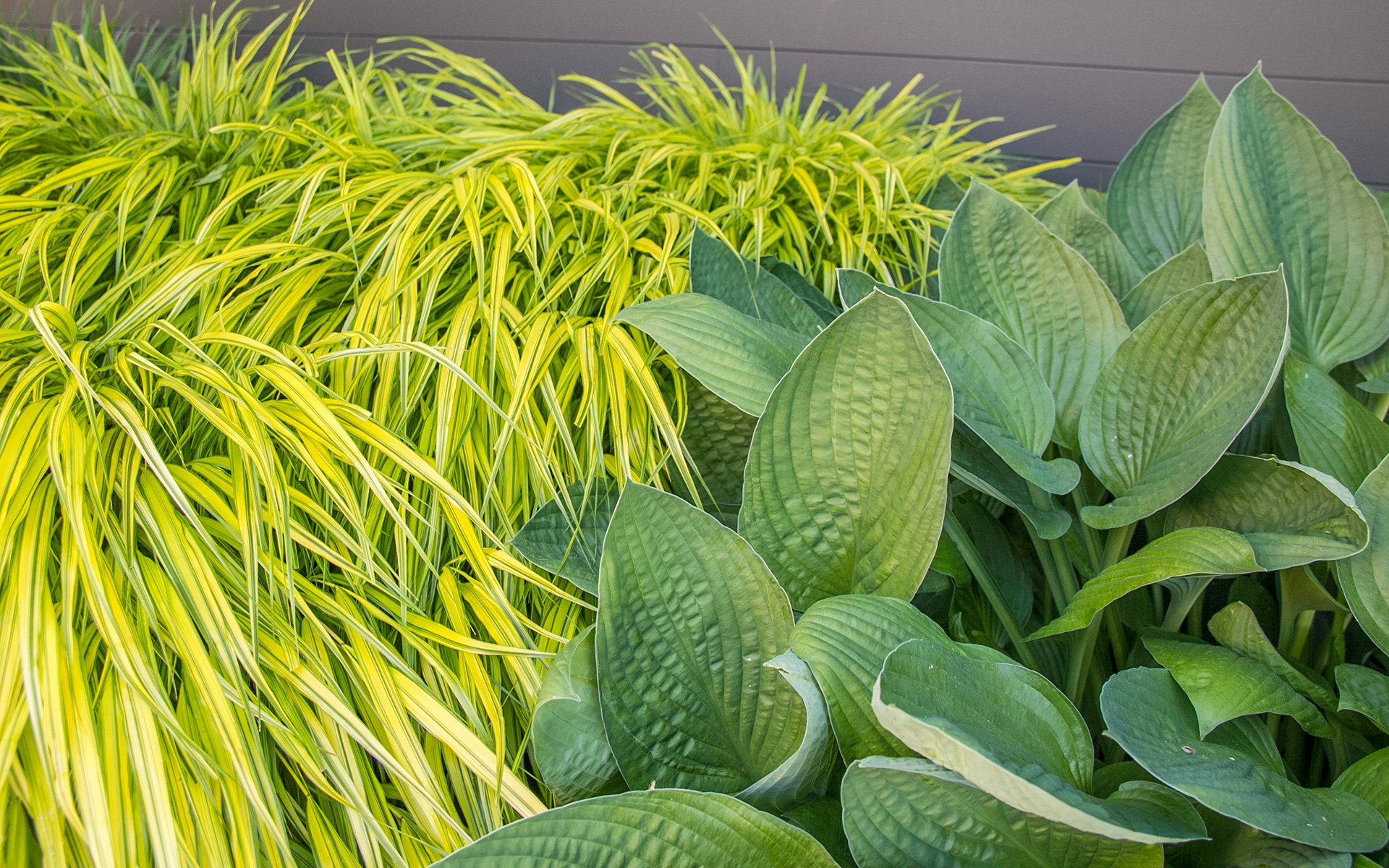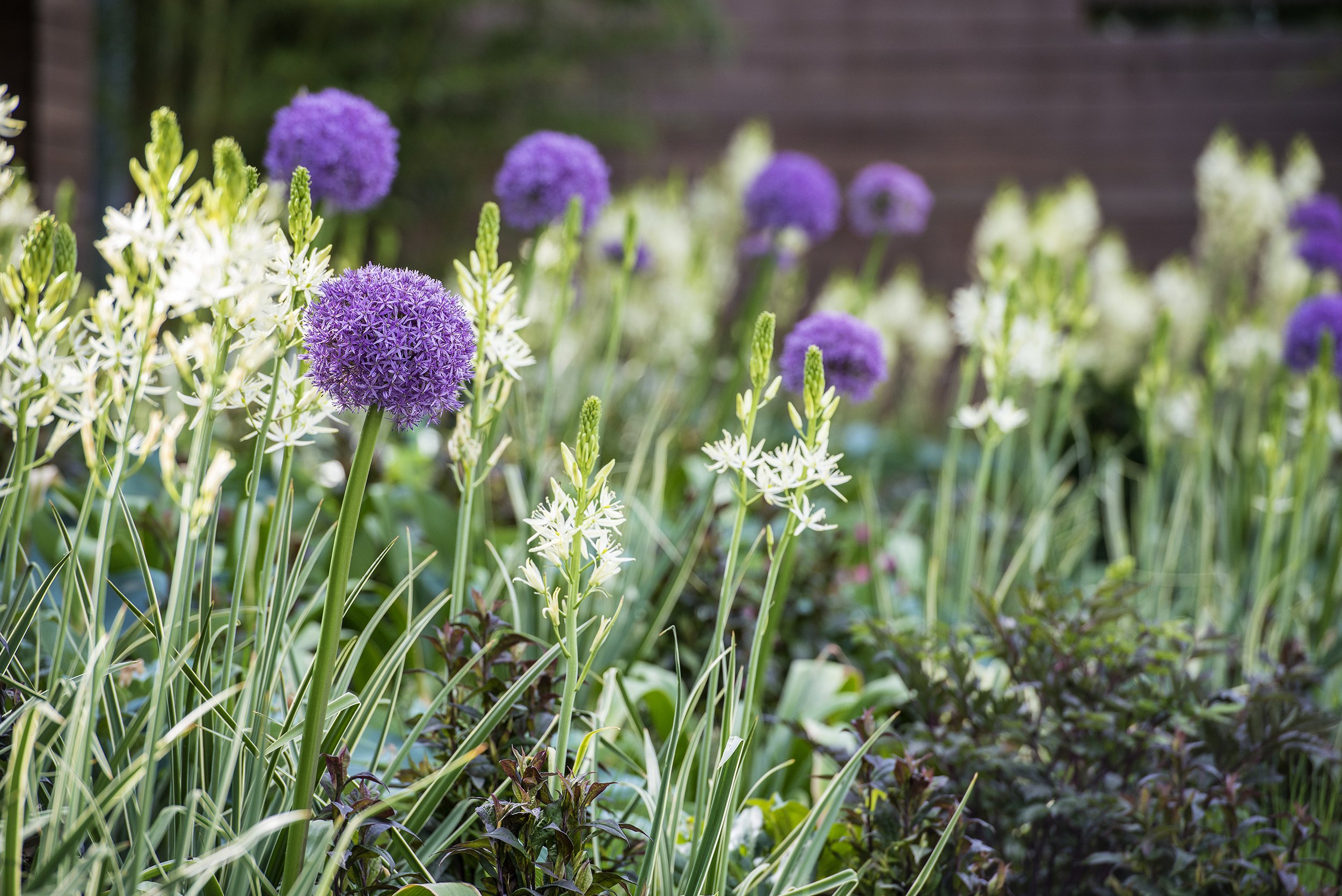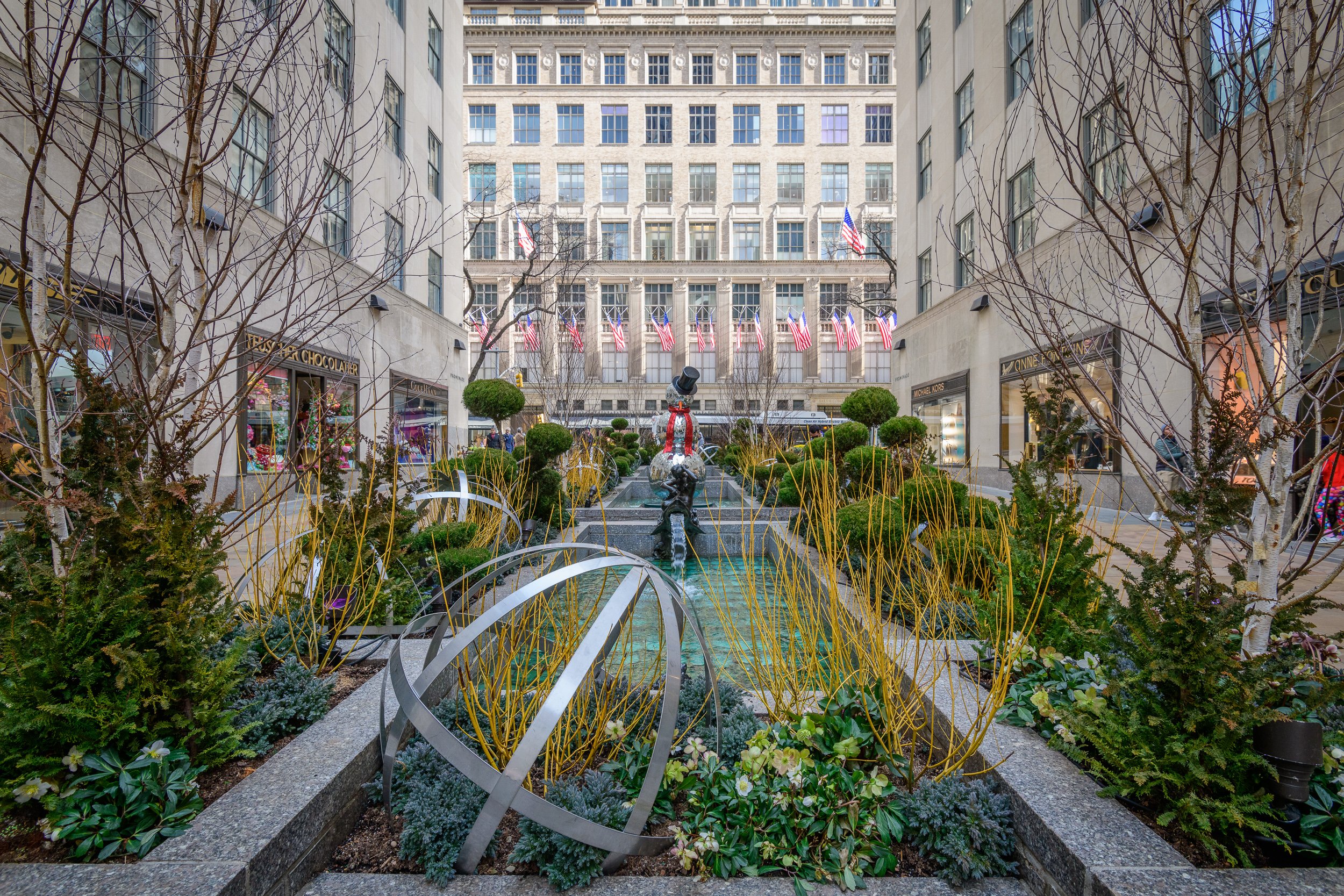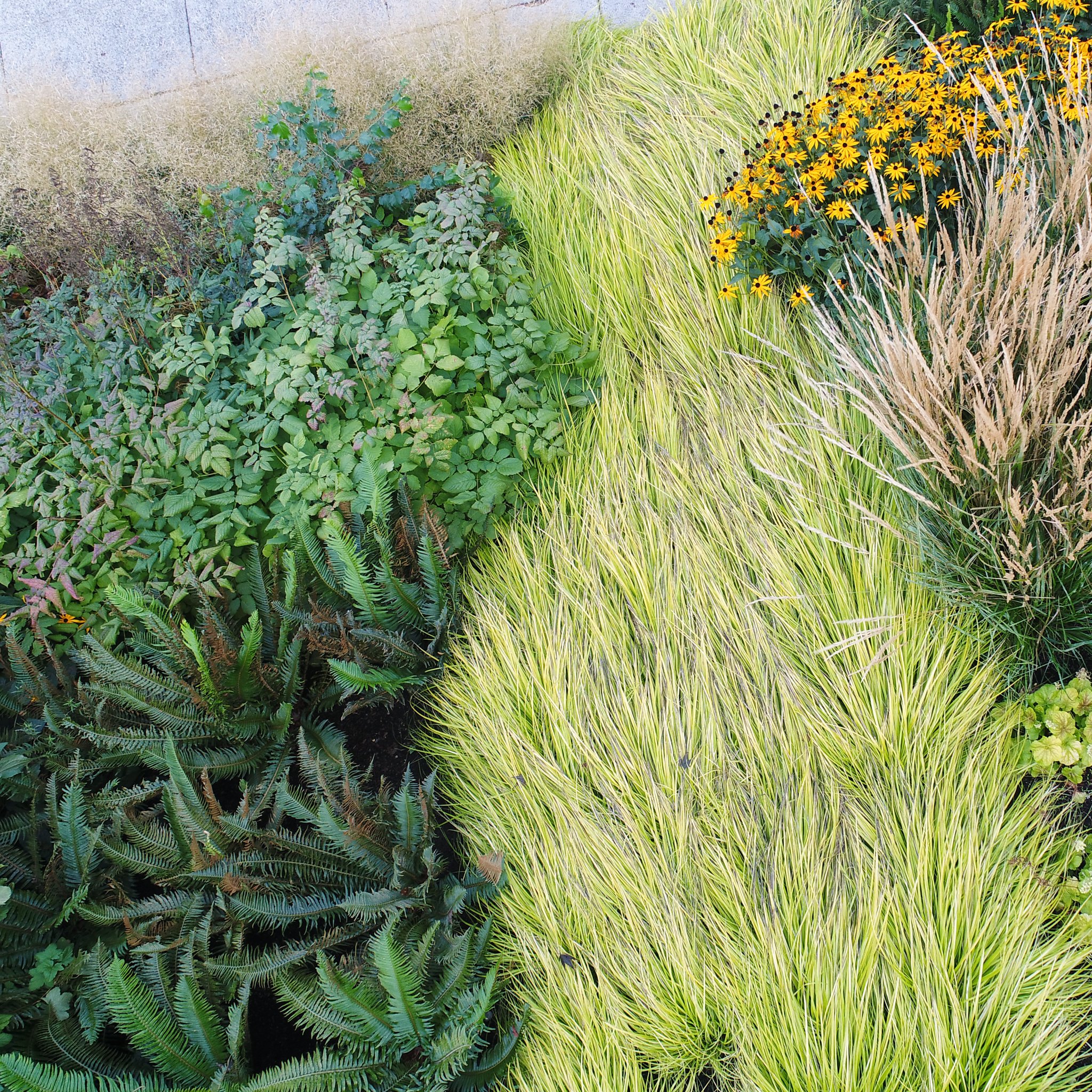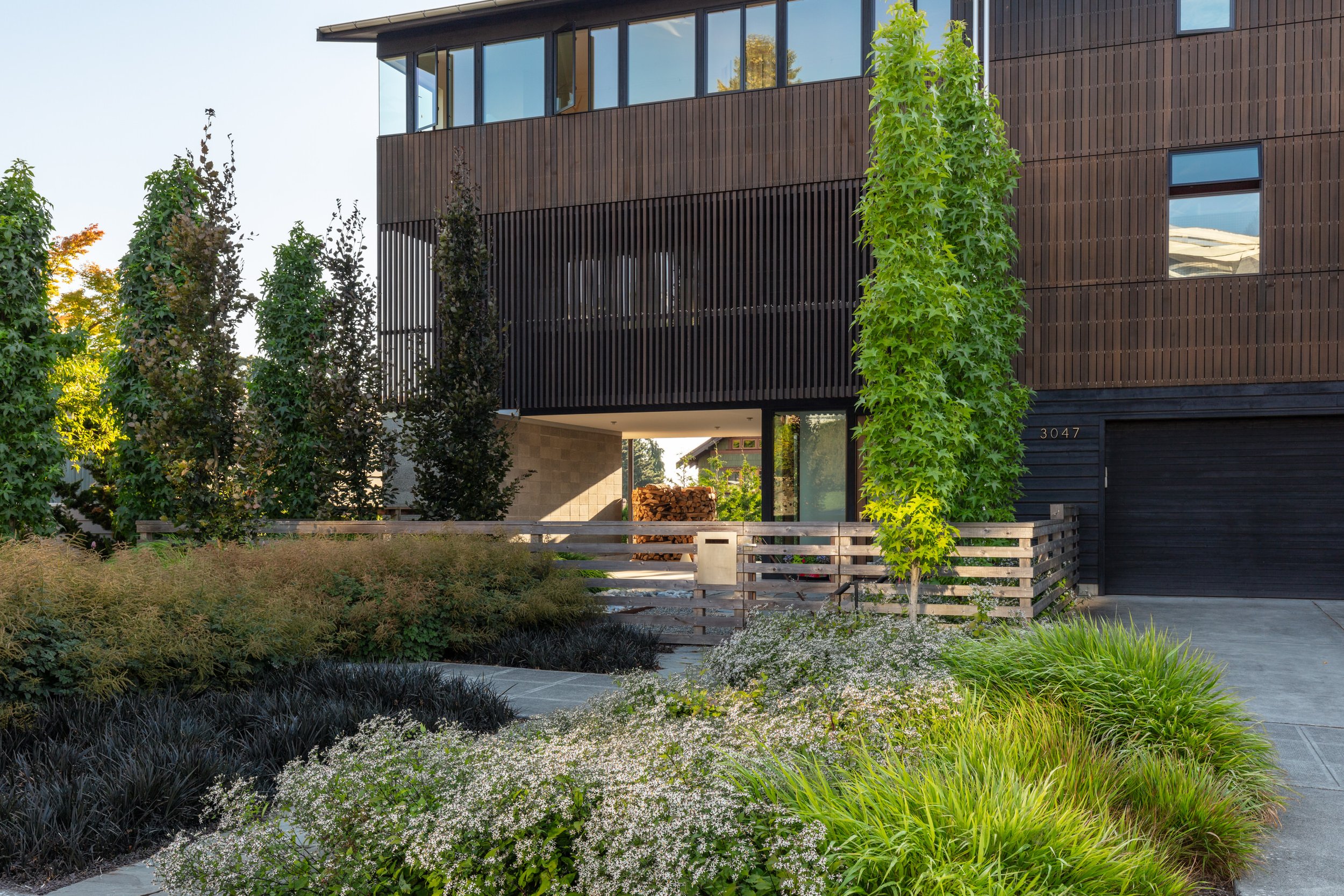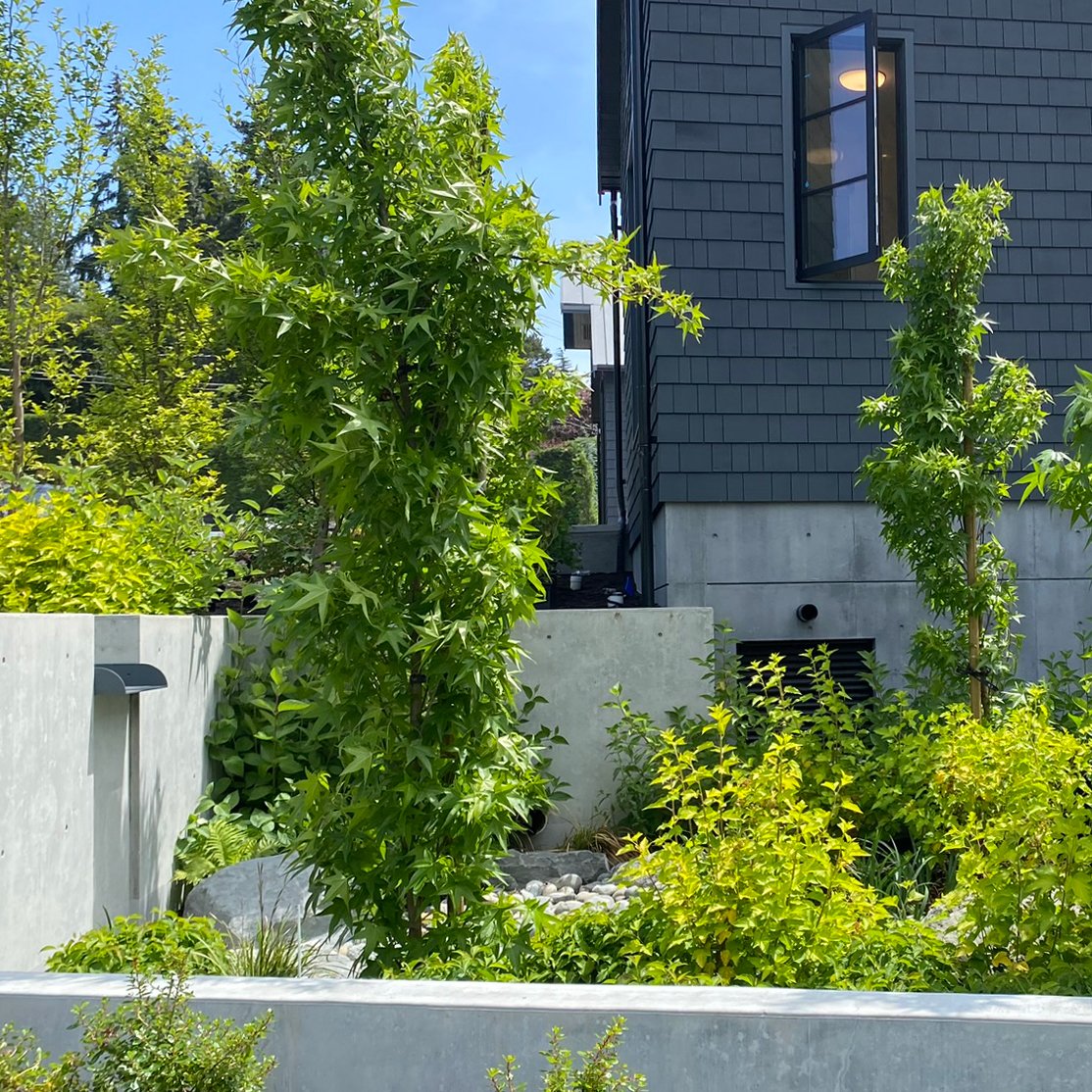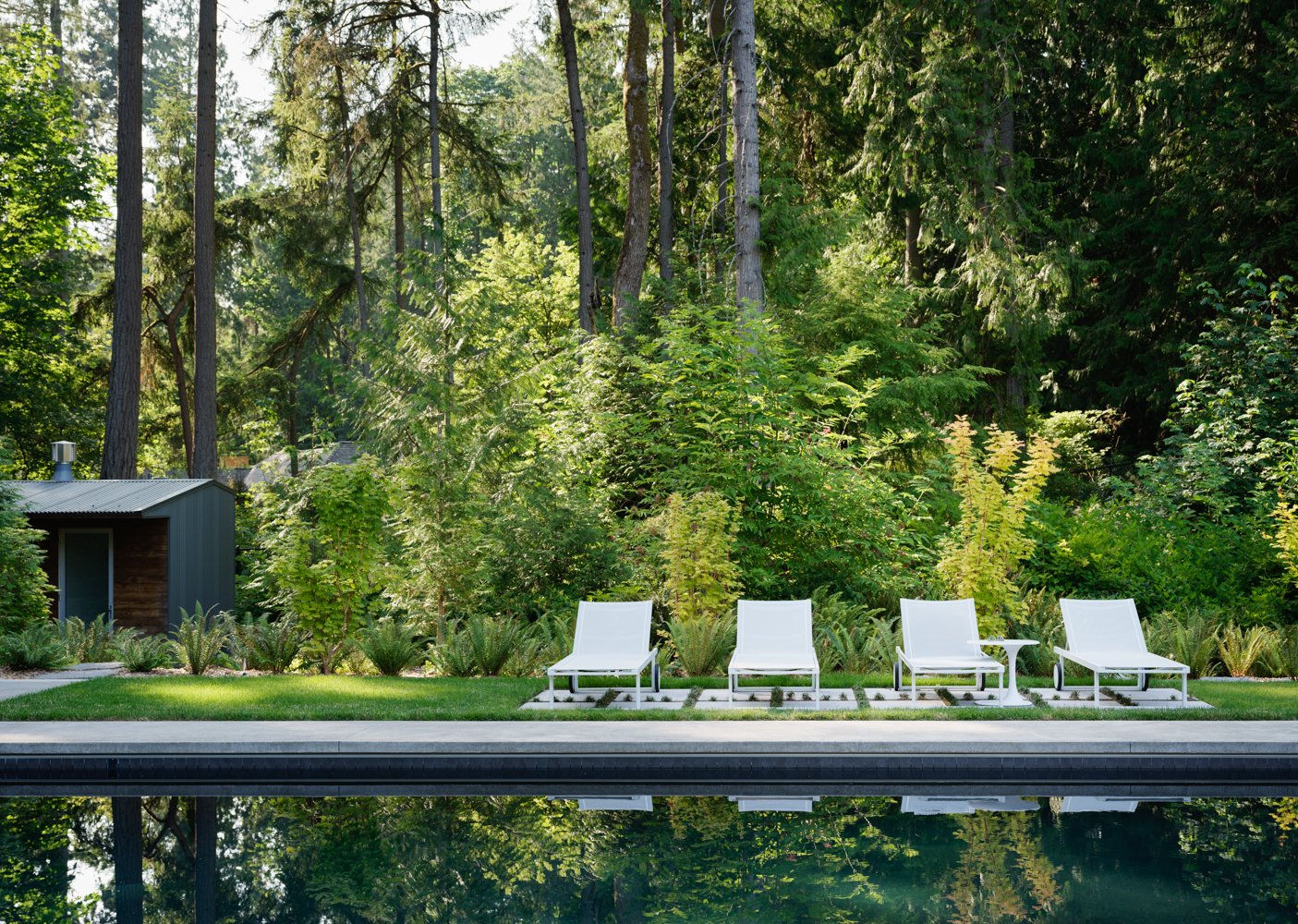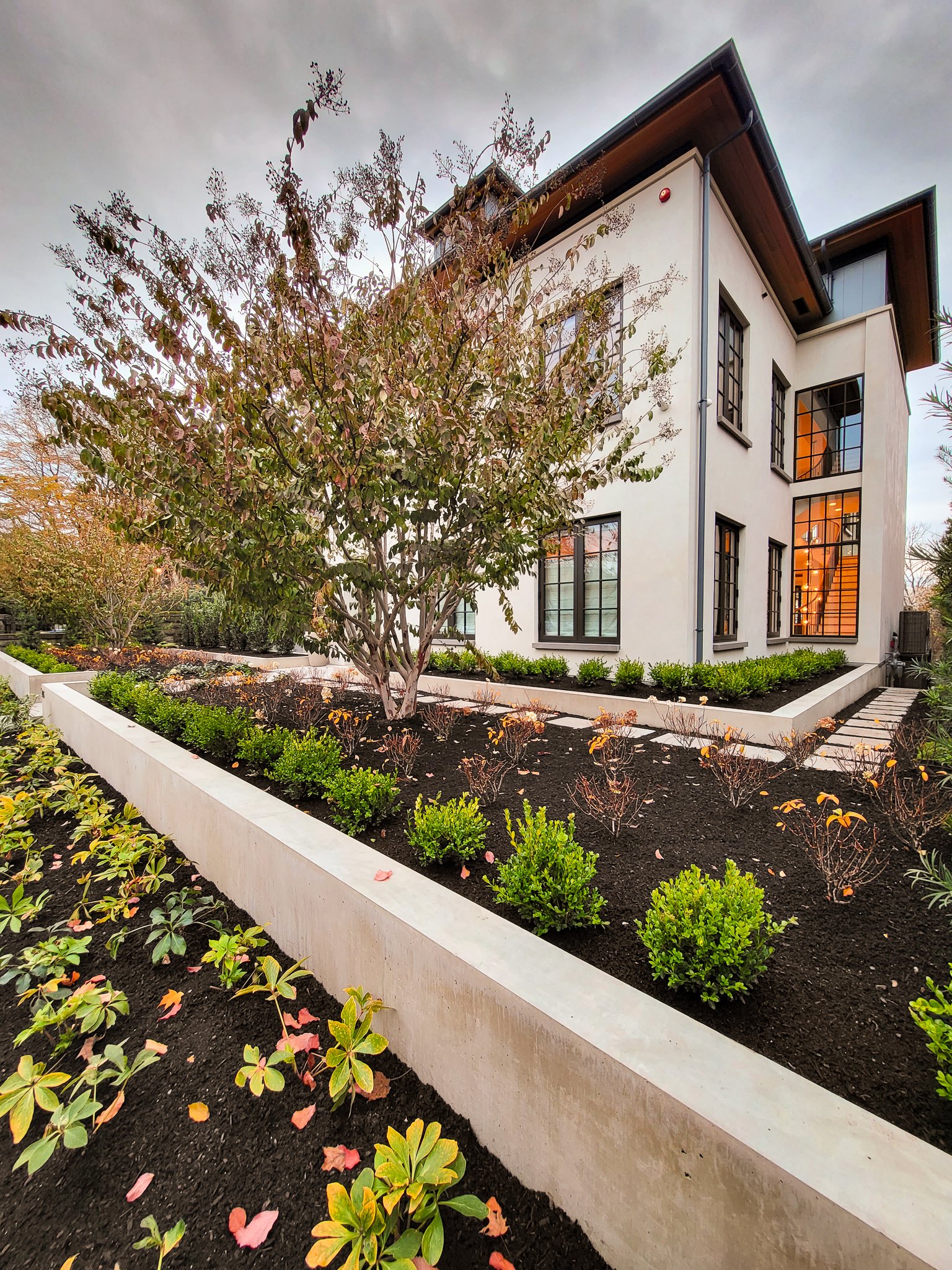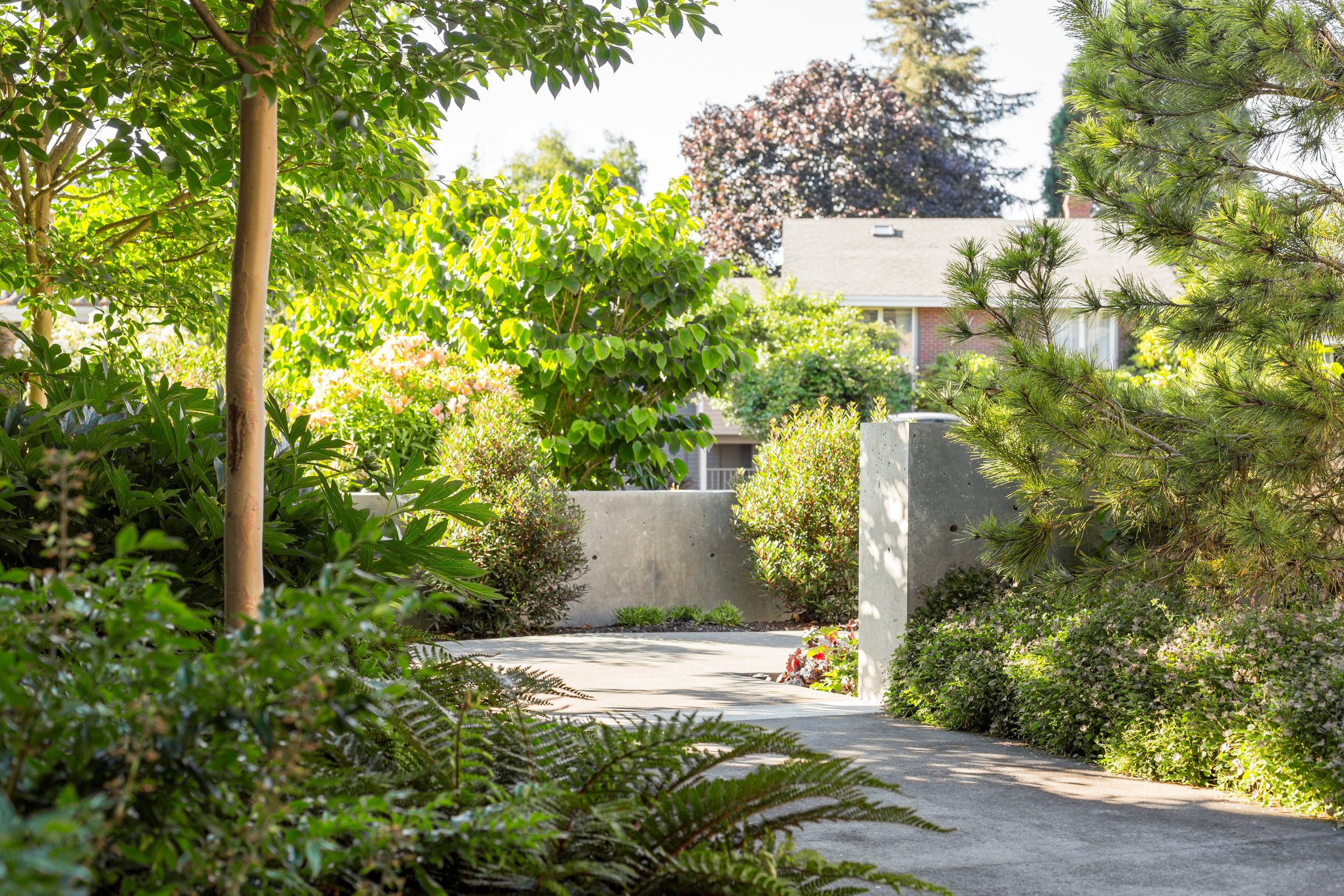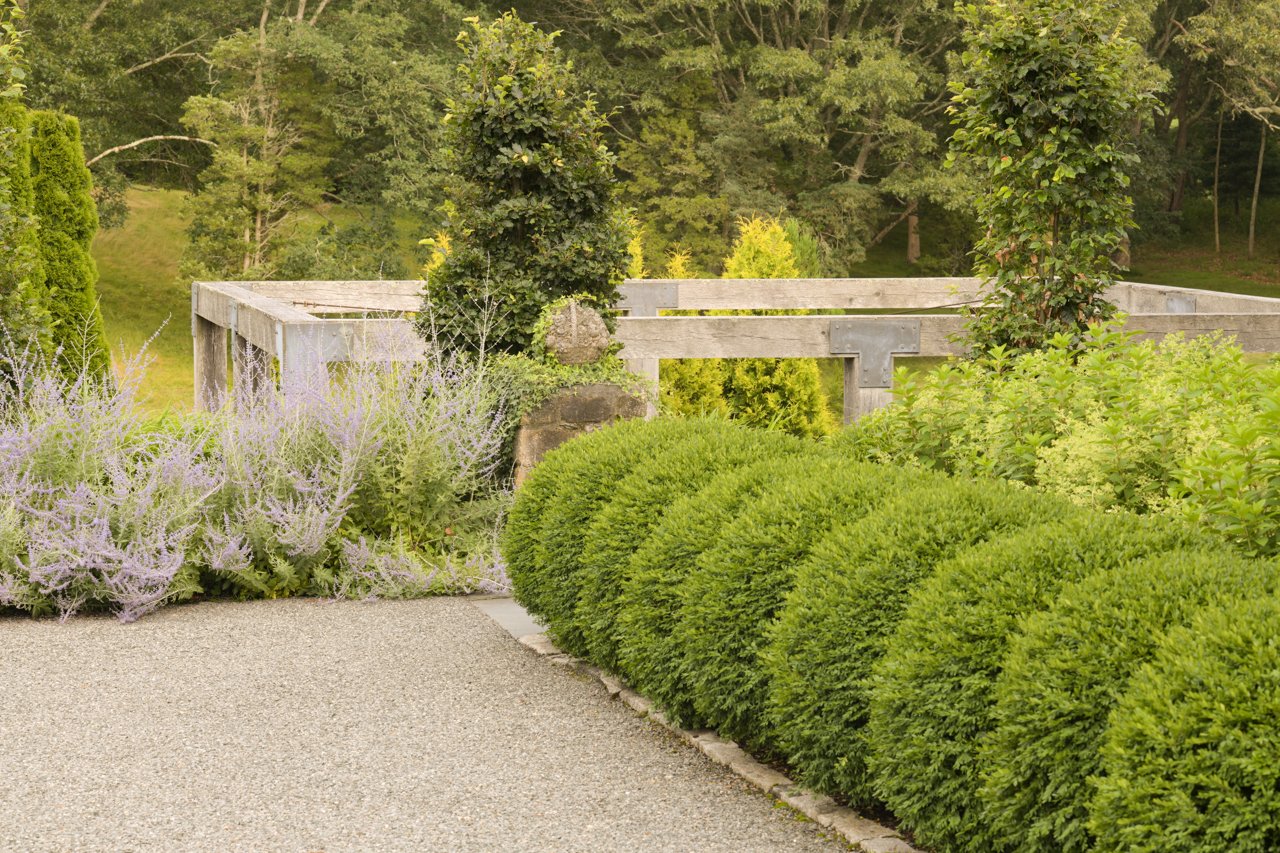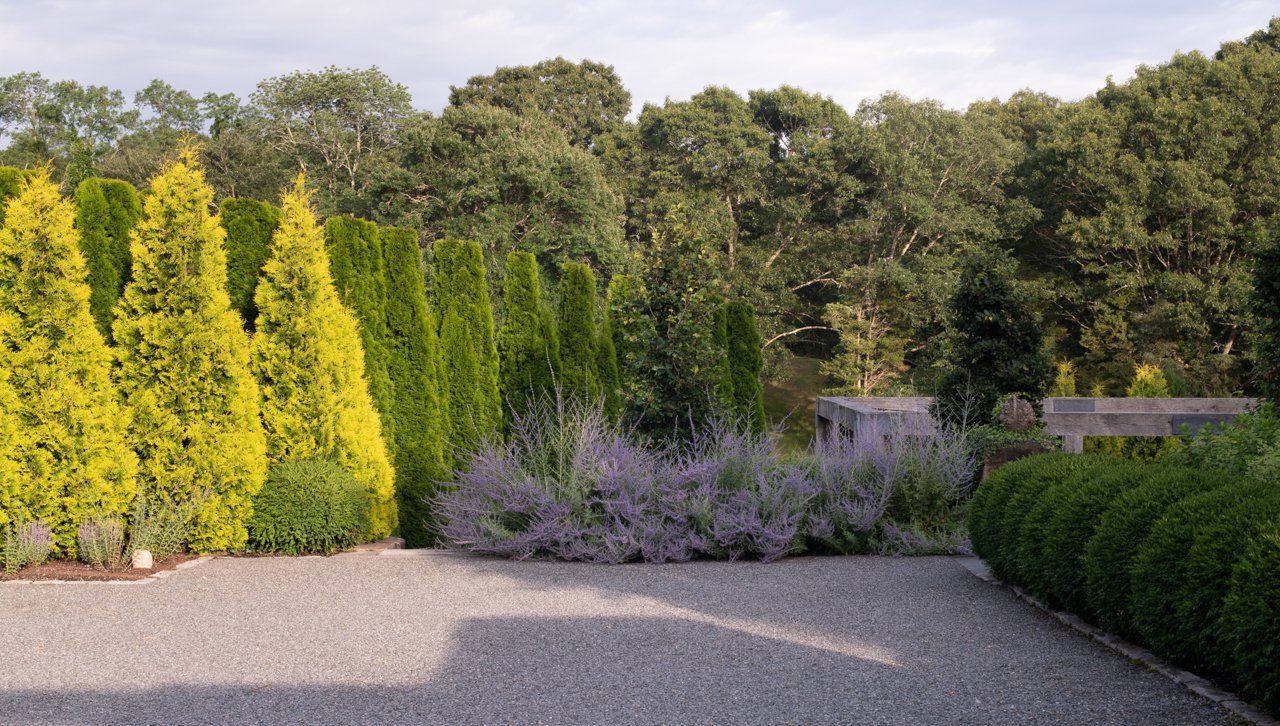Planting a Garden
By Richard Hartlage
Mountsier Garden in New Jersey reflects 30 years of attention to planting. Photo by Clair Takacs
The big Picture
Ten acres of gardens at this Issaquah project will define the property.
There are so many components that come together to make a garden. There are the initial ideas and styles that cater to the garden owner’s preferences and functional requirements; the spatial arrangement of the available area; and the crafting of spaces through architectural elements such as wood, metal, concrete, stone, polycarbonates, and a wide variety of historical and newly developed materials. Above all, it is the inherent dynamic qualities of plants – the living, ever-changing aspect of garden spaces – that distinguishes gardens from more static structures like houses.
Plants as a compositional element can be utilized in large monocultural blocks, in ecological designs, in painterly compositions, in modernist forms, and via any number of other techniques. In a garden, plants are employed above all for their effect. They constitute the living part of a special composition that reinforces design intent.
How do we know which plants to place, and where, to achieve the design intent? Exceptional planting design stems from experience, and there's no substitute for a lifetime spent observing plants in various conditions over many years. While in my own garden (intended in part for horticultural exploration) I cultivate numerous rare plants for the joy of growing them, very few of our clients are looking for such a labor-intensive lifestyle. Googling a hodgepodge of websites will only provide you at best with some generic guidelines and explain average growth conditions for some species, but it lends itself to an unrelated assemblage of plants. We aim to create places and establish a cohesive garden ecology based on experience and suited to a particular microclimate.
The homeowner’s strong interest in plants resulted in this richly planted garden at The Five Residence. Photo by Miranda Estes
We plant to suit many purposes – to create focal points in distant views, provide screening, cast shade, adorn walls, offer the pleasures of color and fragrance throughout the seasons, etc. But whatever the driving purposes, our planting is always intentional.
How do we select plants? We choose species and cultivars which are:
Disease-resistant
Long-lived
Available
Appropriately sized at maturity or for the lifespan of the garden
Easy to maintain
Multiseasonal (especially for trees and shrubs)
Interesting for long seasonal periods
Impactful!
Planting for Conditions
Hidden Cove’s Japanese-styled garden is in congruence with the home’s architecture. The use of the owner’s prized bonsai collection required horticultural knowledge around growth rates and eventual sizing to ensure the garden’s harmony over time. Photo by Aaron Leitz
Plant placement is an art and a science. It requires an understanding of the near-term growth rates and the long-term size a plant will eventually reach over the lifetime of the garden. You might read that a coastal redwood can reach 120 feet, but what does that mean in terms of the available growing conditions, and in what time frame?
As a composition constructed of plantings, the garden is in harmony with the home at The Studio.
In many instances, we rely on my 35 years of direct experience managing estate and public gardens, with my first projects now established for 30 years. My experience managing collections-based botanical gardens has been invaluable to my knowledge base, teaching me through the sheer volume of species and cultivars involved. Building a collection garden for study means not only planting what you know but - even more importantly – what you don’t yet know. This program for exploration has allowed me to push boundaries of conditions for cultivation, determine plant hardiness, and expand on the knowledge available in the existing literature. Ultimately, this direct experience informs the team at Land Morphology to choose the best varieties for a composed garden, for optimal performance and function, with the assets that will strengthen the intended garden aesthetic.
Here, at the Magnolia Modern residence, the verticality of the Columnar Sweet Gum trees plays against the home’s horizonal planes. Photo by Miranda Estes
Trees
Most trees we plant are aimed for a twenty-to-thirty-year lifespan in urban gardens, and longer for larger properties, per the average length of time clients spend in their spaces. Plants are not static! They evolve as a garden community, growing into and out of their intended effects, impacting each other positively and negatively. The essential thing is that they always reinforce the design intent of the entire composition.
Even with a twenty-year growth horizon, we prefer trees that will grow quickly enough to make an impact within the first year after planting. I also prefer trees that are not overly competitive, allowing understory plants to thrive.
The following are a few examples where experience with the behavior of particular plants helps us layout high-functioning, multilayered gardens:
Maples: We avoid planting Red Maples due to their dense shade and resource extraction from the soil which will stifle any underplants. A superior plant for almost all gardens, with similar aesthetic qualities, is the sugar maple.
Stewartias: Another tree family, stewartias are a major player in our office due to their four seasons of interest, moderate size, widespread availability (a parameter not to be underestimated, given how quickly many cultivars go permanently out of production), open canopy, and generosity in allowing underplanting.
Magnolias, evergreen and compact: Two similar-looking magnolias perform quite differently from each other in different parts of the country: Teddy Bear Magnolia has a far superior growth pattern in the Pacific Northwest in size, leaf quality, and blossom to Little Gem, even though Little Gem is more widely available and well suited to more southern climates.
Hedges
The serpentine hedge in Richard’s garden delights passers-by year round. Photo by Miranda Estes
We plant hedges densely for both visual and physical enclosure. Unlike in England, where beech and hornbeam hedges are traditionally spaced at eighteen inches, we believe in planting closer together for optimal effect. For instance, Boxwood hedges are spaced between twelve to twenty-four inches apart, utilizing only modern blight-resistant varieties based on years of experience.
Shrubs, Perennials, and Groundcovers
Richard’s own garden serves as an laboratory that helps informs the team at Land Morphology to choose the best varieties for a composed garden. Photo by Miranda Estes
Shrubs and perennials are planted for ground coverage, water conservation and weed suppression. Groundcovers we space at a sufficient density to fill in within twelve to eighteen months, perennials within eighteen to twenty-four months, and mass-planted shrubs within twenty-four to thirty-six months. This takes a lot of plants. Contrary to common belief, removing plants later is not necessary - plants are irregularly spaced in nature and this density aims for maximum mid and long-term impact.
Planting for our Creekside Contemporary project includes a flowering meadow. Photo by Miranda Estes
I've overheard coworkers telling clients that we plant lushly. What this means in practice, in addition to the aesthetic effect being described, is that we plant based on best horticultural practices and ease of maintenance, all in the pursuit of creating a garden space.
Experience and Long Term Goals
Trees, shrubs, and perennials are used to create a sense of enclosure and define the individual garden rooms at The Studio.
There's no substitute for knowledge gained through firsthand experience. With experience, you can better evaluate information from trusted experts rather than relying on random, unknown sources. When learning about plants in person, studying isolated juveniles of trendy cultivars in retail nurseries is not that useful - instead, visit locations with established specimens and plant communities like arboreta, public gardens, or the gardens of experienced makers. Best of all, grow plants yourself, removing ones that fail to thrive.
The landscape at InSitu combines structure, rich planting, and art. Photo by Rob Cardillo
Our projects succeed because we always keep the big picture in mind: planting for impact, effect, function, and long-term viability. We aim to transcend assemblages of plants to instead create gardens.
Mountsier Garden’s experiential qualities are a direct result of a 30-year relationship between owner and designer. Photo by Rob Cardillo



